This is a continuation of a series of posts on the Nikon D850. The series starts here. You should be able to find all the posts about that camera in the Category List on the right sidebar, below the Articles widget. There’s a drop-down menu there that you can use to get to all the posts in this series; just look for “D850”.
In this post, I’m going to take everything I’ve — and, if you’ve been reading along, we — have learned about the AF Adjustments on the D850, and apply that knowledge in an attempt to come up with a compromise AF Adjustment setting that works for focal lengths of 70, 105, and 200 mm, and f-stops of f/2.8 through f/8 in 1/3 stop increments.
I set the camera’s AF Adjustment to 0 and made test exposure runs of ten shots each at each of the possible variations of f-stop and focal length. Here are the resulting focus plane errors, sorted by focal length:
The lens is biased toward front-focusing, as shown by all those negative numbers on the vertical axis. It looks like to correct the lens wide open, we need to move the focussed plane by about 35 micrometers (um) towards backfocusing. That will overcorrect us at 200, and undercorrect at 70 mm. We could then hope that depth of field (DOF) will save us as we stop down.
Before we do that, let’s look at the circles of confusion (CoC) implied by the above curves.
Now here are the CoCs with a 35 um shift simulated:
Looks like that’s a bit too much, but we now have the worst-case mean error down to about two pixels, which ain’t bad, in endeavors where close-enough counts, like horseshoes, hand grenades, and PDAF.
It should be possible to automate the process of picking the compromise AF Adjustment value that minimizes either the simple sum of the errors or the rms error over the sample set. But here’s the problem with just turning the whole thing over to a machine. In going through this exercise, I now understand the tradeoffs of aperture and focal length, and I’ve decided that the chances that I’m going to use this lens wide open as 70 mm are somewhere between slim and none, so I’m going to try a 25 um shift.
When we do that, here’s what results:
I think that’s as good as it’s gonna get.
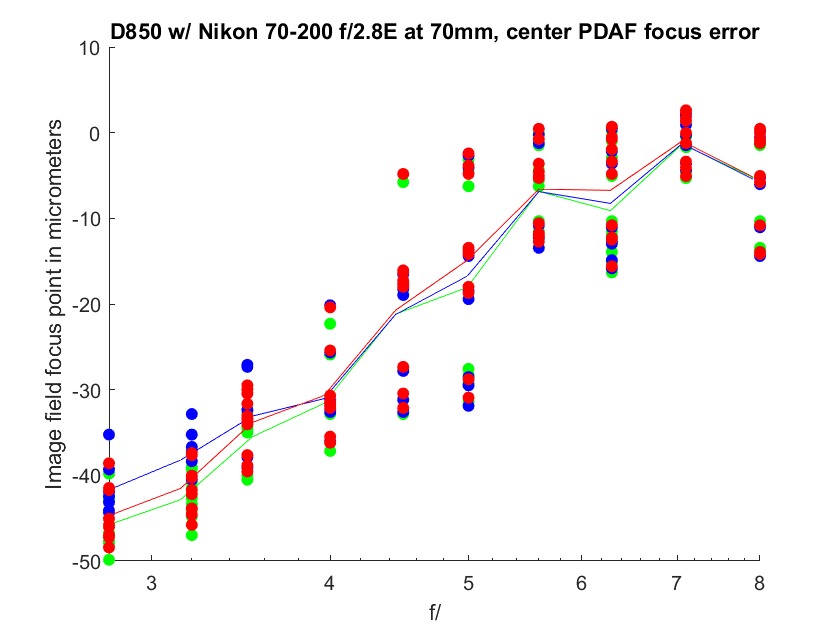
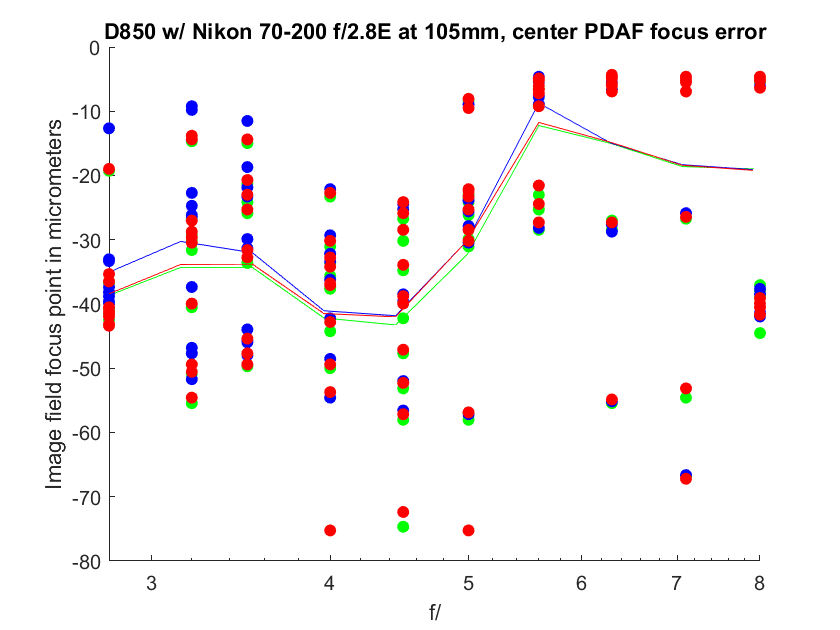
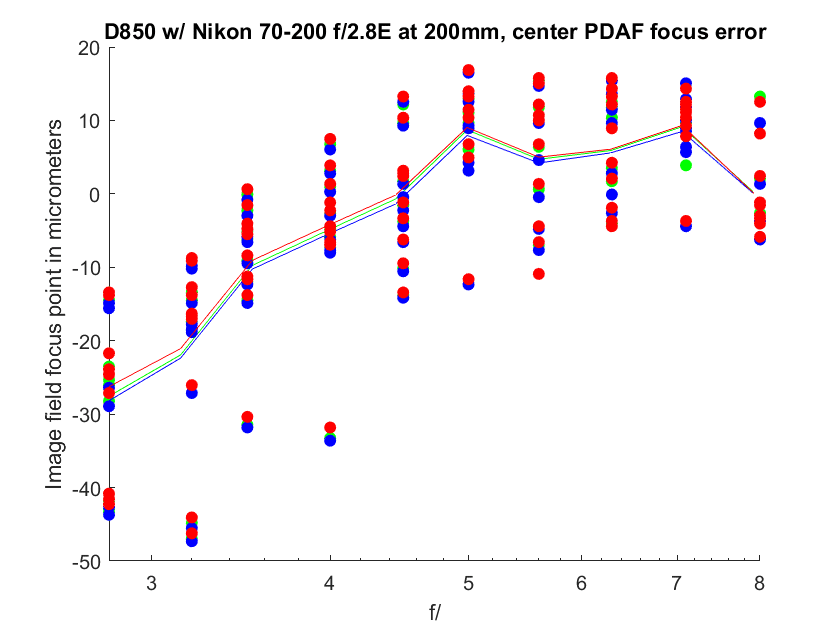
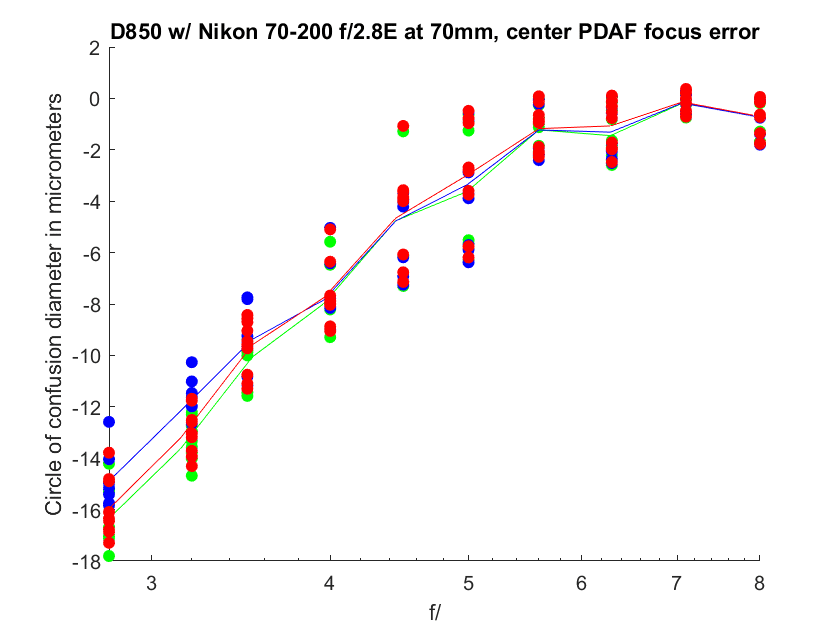
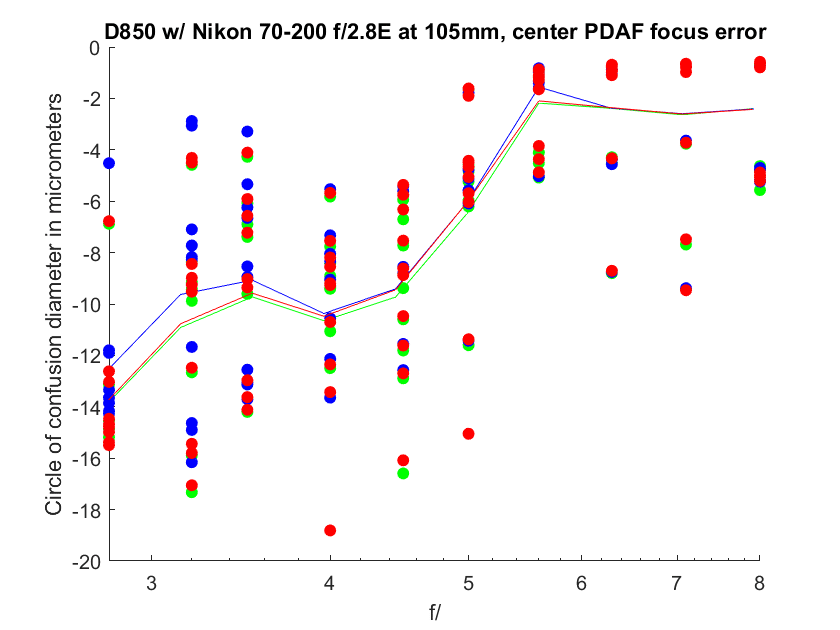
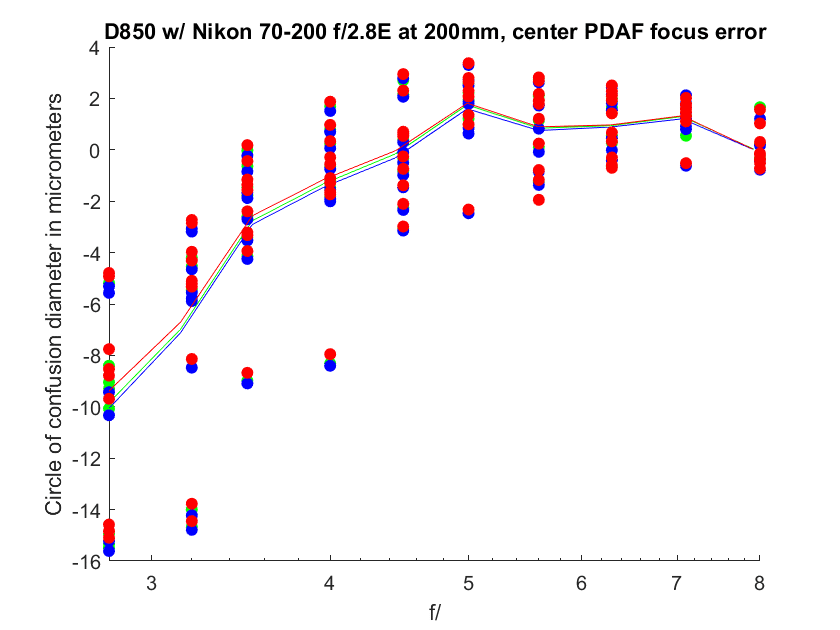
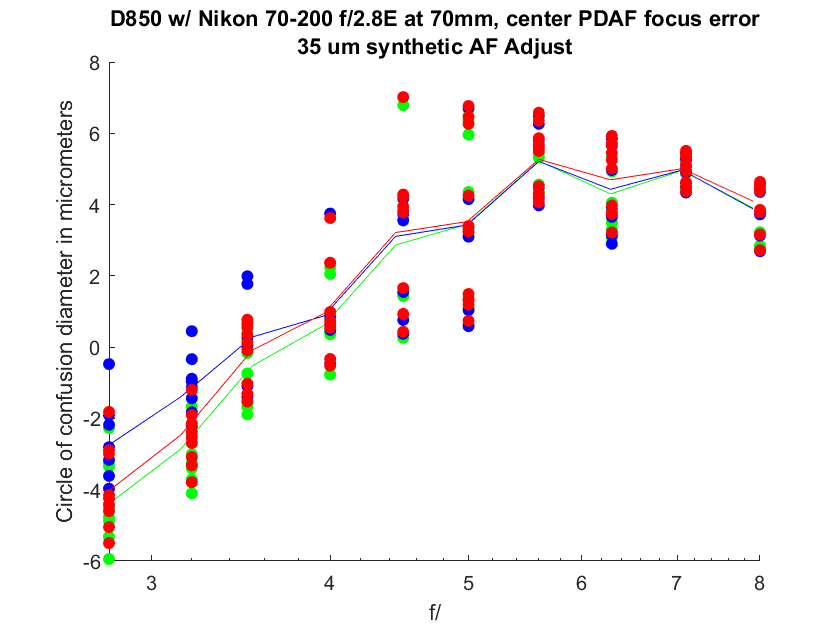
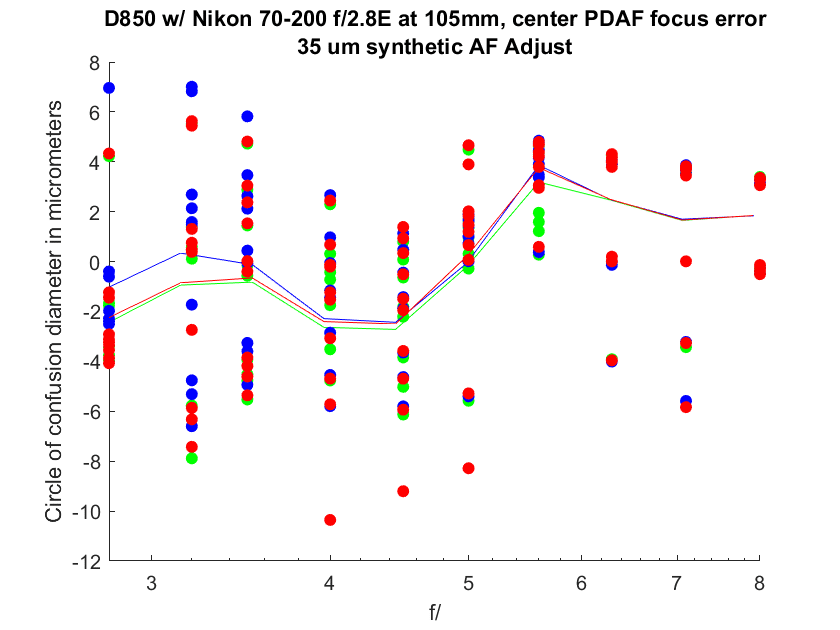
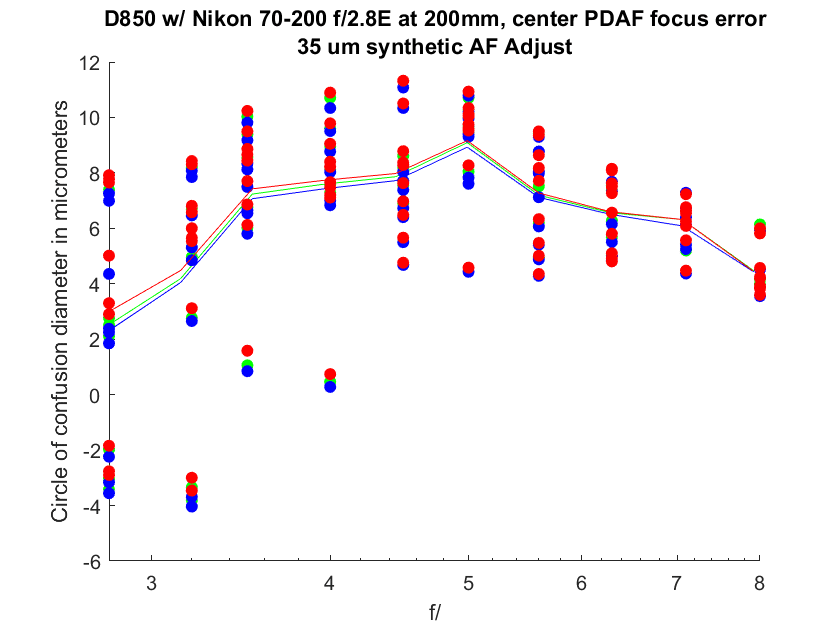
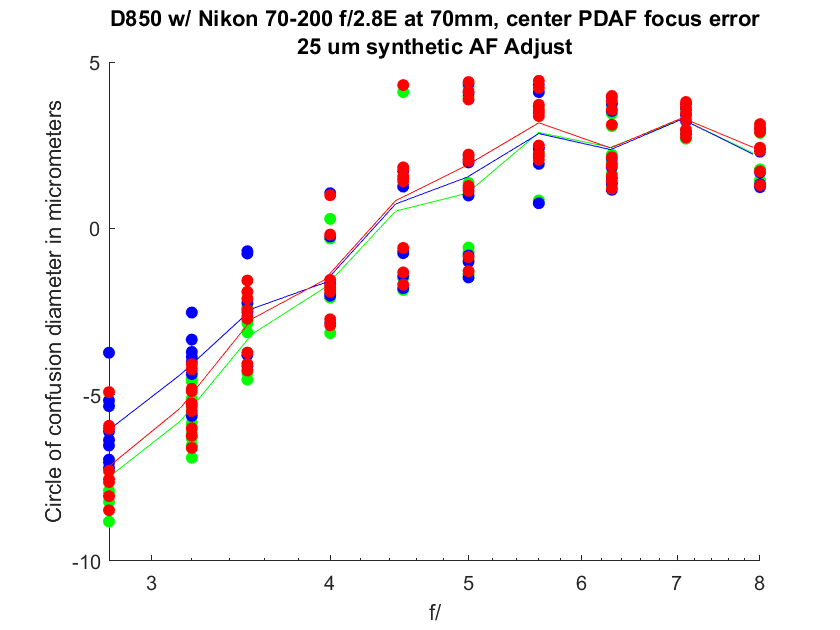
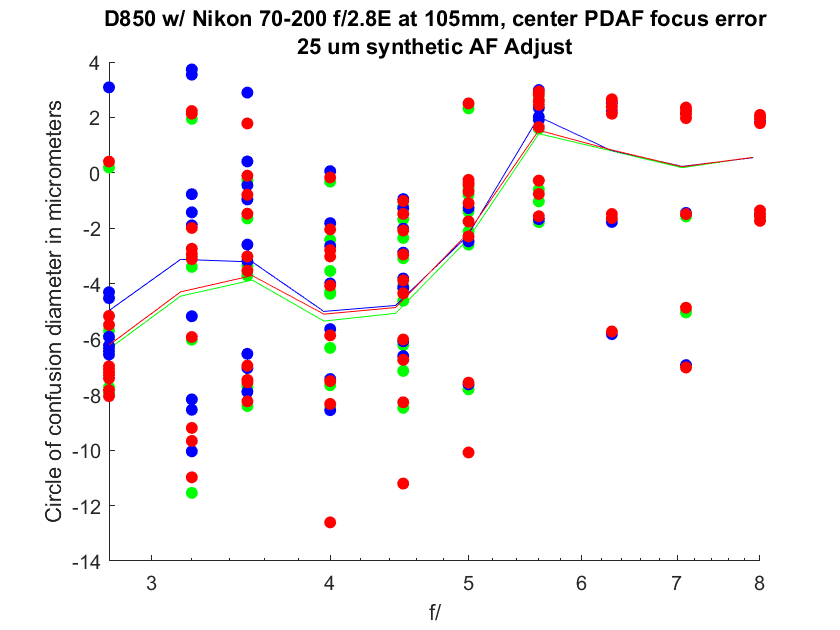
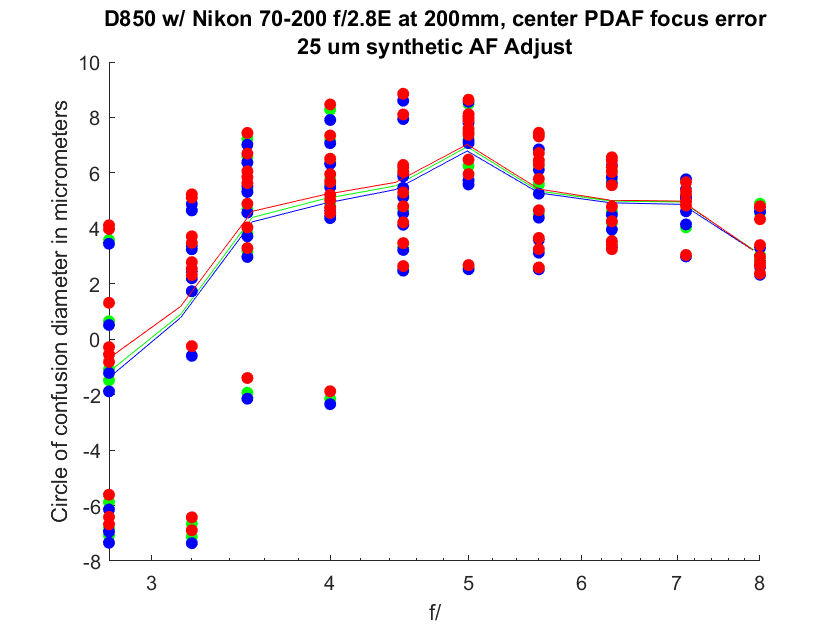
Leave a Reply